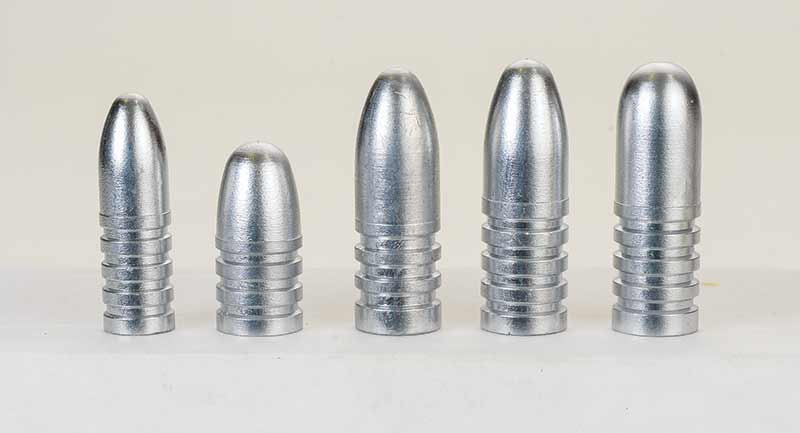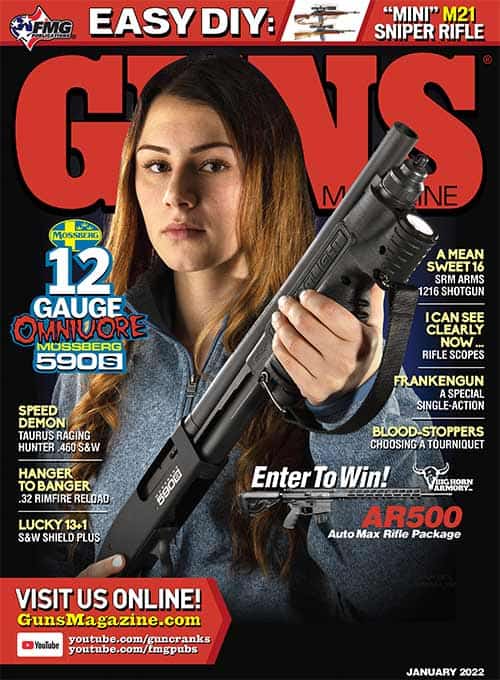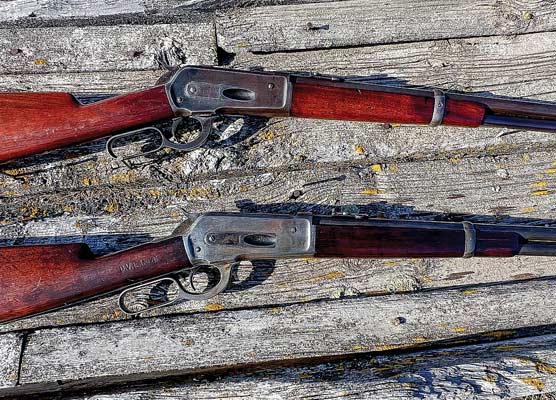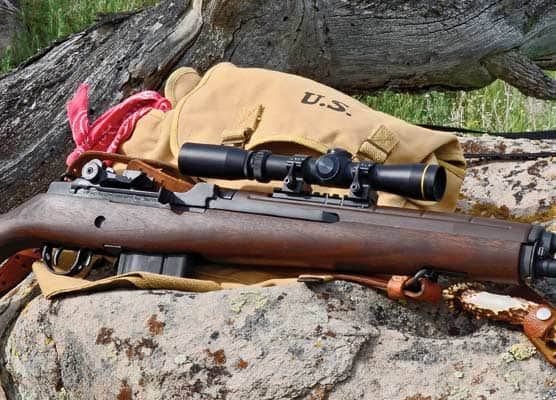Mold addict!
Madness, insanity and more at the casting bench
No doubt about it — I’m an addict. But, not for any sort of chemical substance. I’m a bullet mold addict! Here’s some evidence.
I’ve owned several hundred bullet molds starting at age 17. Over the years the majority of those have been sold, traded, or ruined within days due to ignorance in my early casting days. At age 72 I still have well over 100 bullet molds running from .25 caliber on the small end to .58 on the large side. I formerly even cast .22 caliber bullets but my hands became so smitten with arthritis, handling such tiny objects became problematic.
Never Stop
I’ve tried to experience most any sort of bullet that can be cast at home with my own two hands. Molds for hollowpoint, hollowbase, semiwadcutters, wadcutters, round nose, round nose/flatpoint, plain base or gas check have passed through my hands. Of course combinations are available such as hollowpoint semi-wadcutter with gas check.
Over the years I’ve tried iron, brass and aluminum mold blocks. Collectively they have been cut with one, two, three, four and six cavities. The most recent mold I’ve acquired came from Accurate Molds in Salt Lake City. It is for a .38-40, 175-grain RN/FP plain base bullet and made of iron with three cavities. It pretty well illustrates what I like in a revolver bullet mold in regards to the block material, number of cavities and bullet form.
Here’s a good example of my affliction. In 2020 I purchased a fine .41 Colt SAA made in the early 1900s. I won’t go into detail about this cartridge’s oddness just now but suffice it to say I needed a hollowbase bullet of about 190-grains about 0.386″ to 0.388″ in diameter. I’ll explain the mismatch of dimensions in a future column.
After buying the .41 Colt I began looking for a used hollowbase mold dropping about a 190-grain bullet of 0.386″/0.388″. Lyman used to make them and a now-defunct company called Rapine Molds did so too. Both versions were single cavity only. I had no luck, but a tip led me to MP Molds which offers an ingenious method of casting hollowbase bullets in multiple cavity molds. Surprisingly, MP Molds is located in Slovenia but the .41 Colt mold arrived in a mere week. It is made of brass and of beautiful quality.
Why is this .41 Colt story a sign of my addiction? Because I would not stop. Diligently I kept searching until I found on eBay a Lyman mold #386178 and later a Rapine mold #386185. Then I had custom-made by Buffalo Arms Company of Idaho both 0.386″ and 0.388″ lube/sizing dies. In the end I spent about $750 in molds and sizing dies for this one revolver. I just couldn’t help myself!
A major change in bullet molds has occurred since I started in 1966. Back then most were produced in factories and cut by the “cherry” method. This was when a hardened cutter was built in the image of the bullet. Then it was spun in a milling machine while the mold blocks were pressed together. Therefore, manufacturers offered standard selections as is still done by Lyman, RCBS, Redding/Saeco and Lee.
Transformation
Times have changed. Now there are a plethora of custom bullet mold makers. Lathe boring the mold blocks is common. Some shops cut each mold to a customer’s desire. My long-time friend Steve Brooks of Walkerville, Mont. does so using only iron blocks with a single cavity. His molds are favored by precision-minded cast bullet rifle shooters. Steve is a two-time national champion in the BPCR Silhouette game and knows what a winning bullet should be. My few wins have been with bullets from his molds.
Other makers have turned to CNC machinery. For instance, Accurate Molds mentioned above has about 700 bullet designs in their computer. Pick one and it can be made with one, two or three cavities in aluminum, brass or steel blocks. Such is how my recent .38-40 mold came about. Another custom maker using CNC machinery is Buffalo Arms. I don’t know how many designs are on their computer system but I know there are plenty. Again, the ones I have are single cavity in iron blocks and popular among the BPCR Silhouette crowd. Additionally, a customer can supply either Accurate Molds or Buffalo Arms with detailed drawings of a cast bullet brainstorm and either outfits can turn it into a fine quality bullet mold. I can speak from experience their products are excellent.
My sage advice after casting bullets for 55 years is this — never sell a good mold, never loan a favored mold, and never say you have enough molds. Surely there is another captivating design still lurking out there.









